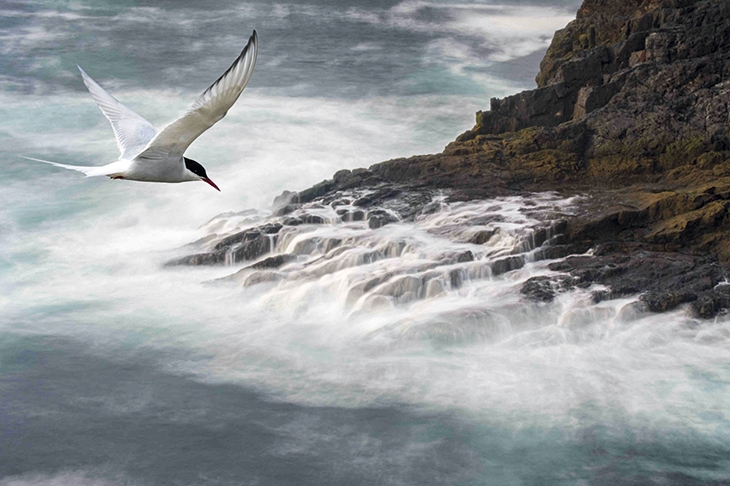Bird migration was once one of those unassailable mysteries that had baffled humankind since Aristotle. A strange hypothesis, genuinely advanced in the early modern period, was that birds flew to the Moon for winter, and barely more credible was a notion, which haunted the patron saint of British naturalists Gilbert White, that swallows buried themselves in mud.
A modern understanding really began in the 20th century, when ornithologists started to place numbered metal rings on birds’ legs. Scott Weidensaul is one of many researchers worldwide who have helped to map this avian story. He then captured the findings in his Pulitzer-nominated Living on the Wind (2003).
Yet he was also aware that these research methods had limitations. As an example, he recalls how he and others placed bands on 4,312 beautiful woodland birds called gray-cheeked thrushes. Of these, just three have ever been relocated. The yield in information is minuscule compared with the massive efforts entailed in the trapping.
In the past two decades scientists have begun to use digital geolocators that are light enough to place on the backs of small birds such as thrushes. The devices have now upgraded our understanding of migration as much as the bird-ringing program laid to rest the old myths about hibernation in mud. Weidensaul has sifted the fresh findings to bring us this meticulously researched, engrossing update.
Take, for instance, his story of bar-tailed godwits — medium-sized waders that grace Britain’s shores in winter. Satellite trackers placed on several Alaskan individuals revealed that they do not skirt the continental coasts on their annual travels to the austral summer. They head out over the Pacific, then fly non-stop for eight or nine days until they reach New Zealand. The two-way journey is 30,000 km and godwits may repeat it up 30 times in their surprisingly long lives.
It is now the longest continuous flight known by any bird, and as remarkable as the act of Ulyssean navigation are the internal physiological changes that license the feat. The godwits binge to double their weight until they wobble when they walk. Yet rather than risking heart disease and diabetes, the birds inexplicably remain in the peak of health. Over the course of their millions of wingbeats they slowly use up the surplus fat, then start to consume their own internal muscles and organs as additional energy. Once they arrive in New Zealand they binge again to restore the weight loss.
The book is packed with these awesome tales. Here are hummingbirds, the equivalent weight of an airmail letter, crossing the Gulf of Mexico in one 500-mile transit. Here are Arctic terns, which range from Pole to Pole in a life of almost permanent daylight, clocking up 100,000 km (62,000 miles) in a year. A dumpy Asiatic shorebird, the great knot, flies nonstop from Australia to Korea in a feat of endurance that makes top human athletes look like couch potatoes. Weidensaul, who delights in these comparisons, points out how a Tour de France cyclist operating at the limits of human capacity is functioning at five times his base metabolism. The great knot, meanwhile, without food, water or rest, sustains eight times its base metabolism for days at a time.
As much as the book is upbeat and celebratory, Weidensaul is fearless in describing the acute challenges that face the birds he loves. The hemispheric background is grim enough: a loss of 3.2 billion birds from North America since 1970, and 400million birds from Europe. The transient behavior of migrants places them at even greater disadvantage, because they require stable habitats and resources wherever they alight. We learn that the populations of America’s migrant shorebirds, including the bar-tailed godwit, have halved in 50 years.
Weidensaul notes that one of the most unlikely, if acute, pressure points is the world’s foremost industrialized heartland — on the great sweep of intertidal flats as the Yangtze debouches into the Yellow Sea. Where once the mighty river carried soil sediments from inner Asia to the Chinese shore, today 90 per cent of those ancient silts are blocked by 50,000 dams. Environmentalists are deeply worried about the millions of waterbirds that pause there to feed, and have identified it as one of the worst ecological crises on the planet. Under intense international pressure, the Chinese government has recently set aside an enormous reserve, almost twice the area of Greater London.
A World on the Wing is a superb globe-trotting survey of avian restlessness that reaches one core conclusion. Migrants may seem like here-today-gone-tomorrow nomads but they are really inhabitants of a single place and one living system, on which they and humans depend equally: the entire Earth.
This article was originally published in The Spectator’s UK magazine. Subscribe to the US edition here.

























